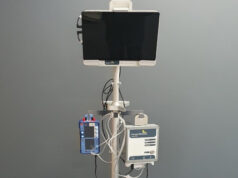
The number of adults living with heart failure increased from about 5.7 million (2009-2012) to about 6.5 million (2011-2014), according to the American Heart Association (AHA)’s 2017 Heart Disease and Stroke Statistics Update.
Based on the latest statistics, the number of people diagnosed with heart failure is projected to rise by 46% by 2030, resulting in more than 8 million adults with heart failure. According to experts, there are several reasons for the rise in heart failure, that can be attributed to medical advances, because more people are surviving heart attacks which means they face higher heart failure risk afterwards, said Paul Muntner, a member of the statistical update’s writing panel and a professor and vice chair in the Department of Epidemiology at the University of Alabama at Birmingham, USA. But the ageing of the USA and other health problems are also major contributors.
The statistical update has been published as a frequently cited reference every year since 1958. It is produced using the most-recent data available compiled by the AHA, the National Institutes of Health, the Centers for Disease Control and Prevention, and other government sources.
In the latest update, many major statistics did not change significantly. Cardiovascular diseases including coronary artery disease, high blood pressure and stroke collectively remain the leading cause of death in the world and the USA. Heart disease and stroke are still the leading two killers in the world; in the USA, heart disease ranks first and stroke fifth.
Here are some key statistics, including the year when the most recent data was available:
- Cardiovascular diseases were the most common cause of death in the world as of 2013, claiming about 17.3 million lives.
- In the USA, more than 1 in 3 adults (92.1 million adults) have cardiovascular diseases, accounting for 807,775 deaths in 2014.
- About 790,000 people in the US have heart attacks each year. Of those, about 114,000 will die. In the USA, about 795,000 adults experienced a new or recurrent stroke, accounting for nearly 133,000 deaths in 2014.
- There were more than 350,000 out-of-hospital cardiac arrests in the USA, nearly 90% of them fatal.
- Disparities in how these diseases affect different people continued, according to the update.
“We know that advances in cardiovascular health are not distributed evenly across the population,” says Emelia J Benjamin, chair of the update’s writing group professor of medicine in the section of cardiovascular medicine at Boston University School of Medicine, Boston, USA. “In particular, individuals who live in rural communities, have less education, have lower incomes, and are ethnic or racial minorities have an undue burden of cardiovascular disease and its risk factors.”
The statistical update also included some encouraging news. The death rate from cardiovascular diseases dropped more than 25% from 2004 to 2014, and physical activity increased more than 7% from 1998 to 2015.
The update included the latest figures on what the AHA calls “Life’s Simple 7,” key measures and behaviours that can help people stay healthy and lower their risk for heart disease, stroke and other major problems.
Life’s Simple 7 includes non-smoking, staying physically active, eating a healthy diet, maintaining a body weight, and controlling of cholesterol, blood pressure and blood sugar.
Here are statistics related to Life’s Simple 7, with the most recent year for which data is available:
- Nearly 17% of men, 14% of women and nearly 5% of children ages 12-17 smoked cigarettes in 2015.
- About 22% of adults in 2015 met federal physical activity guidelines.
- Between 1999 and 2012, although AHA healthy diet scores tended to improve in all race/ethnicity, income, and education levels, many disparities present in earlier years
widened over time, with generally smaller improvements seen in minority groups and those with lower income or education. - In the US, the prevalence of obesity among adults, estimated using NHANES data, increased from 1999 to 2000 through 2013 to 2014 from 30.5% to 37.7%.
- In the US, the prevalence of overweight and obesity among children and adolescents age 2-19 years, estimated using NHANES data, is 33.4% (16.2% were overweight and 17.2% were obese).
- Nearly 94.6 million, or 40%, of American adults had total cholesterol of 200 mg/dLor higher.
- Nearly 86 million, or 34%, of American adults had high blood pressure.
- An estimated 23.4 million, or 9.1%, of American adults have diagnosed diabetes.
- Additionally, an estimated 7.6 million, or 3.1%, of American adults have undiagnosed diabetes; and about 81.6 million, or 33.9%, of American adults have prediabetes.












